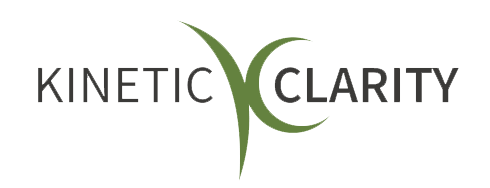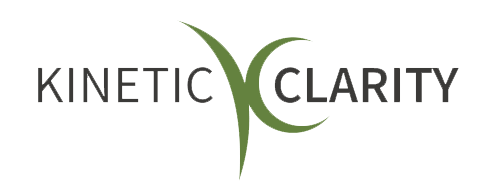The Art of Effective Communication for Conflict Management
Effective communication is paramount for success in all aspects of managing a successful team in business.

Effective communication is paramount for success in all aspects of managing a successful team in business. Regardless of your role or level within an organization, honing robust communication abilities can drastically change how you handle disagreements or conflicts. While often seen as undesirable, these situations are quite common in the professional world.
Thankfully, there are tools out there to help break down the barriers preventing teams from smooth communication. Harnessing the tools and techniques for efficient conflict management can not only improve relationships but also boost productivity and foster a more harmonious work atmosphere.
Utilizing the Thomas-Kilmann Instrument for Conflict Management
One of the most influential strategies for managing conflict is employing the Thomas-Kilmann Instrument, or TKI. This renowned tool is utilized globally and provides valuable insight into five primary methods of handling conflict - competing, accommodating, avoiding, compromising, and collaborating. Each mode has its strengths and weaknesses, making it crucial to ascertain the most suitable approach for varied circumstances.
Competing in Conflicts
The competing mode in conflict management can often be misunderstood due to its seemingly aggressive nature. However, it's vital to note that this approach is not about steamrolling over others but rather about assertively pursuing your own concerns. Competing can be highly effective when immediate, decisive action is needed.
In certain situations, especially where non-negotiable issues or critical decisions are at stake, the competing mode proves to be an appropriate strategy. For instance, taking swift action is paramount in a crisis or an emergency. Here, competing allows for quick decision-making without getting bogged down by prolonged discussions or consensus-building.
The competing mode is also valuable when standing up for your rights or defending a position you believe is correct. For instance, if you feel a proposed plan compromises the quality of a project or it goes against the core values or ethics of the organization, the competing mode enables you to strongly articulate your stance and protect your interests or those of the team or organization.
However, it's essential to exercise this approach judiciously. When used excessively or inappropriately, competition can strain relationships and foster an atmosphere of hostility or defensiveness. It's crucial to strike a balance and resort to competing only when it is absolutely necessary and would result in the most favorable outcome for the situation at hand.
Collaborating in Conflicts
The collaborative mode is often deemed the ideal approach for handling conflicts. Unlike the competing method, the collaborative style emphasizes addressing the concerns of all involved parties and aiming for a mutually beneficial outcome—a win-win situation.
Collaboration is not about compromising or simply agreeing to maintain harmony. Instead, it involves delving into an issue to pinpoint the underlying concerns of the opposing parties and finding a creative solution that satisfies all. This method promotes trust, respect, and a shared sense of ownership of the final decision.
In professional settings, collaboration can be particularly beneficial when the problem or conflict at hand is complex and requires the input and expertise of multiple individuals or teams. By adopting the collaborative approach, organizations can leverage the diverse skills, knowledge, and perspectives within the team, leading to more innovative and robust solutions.
Moreover, when the commitment and buy-in of various parties are critical for successfully implementing a decision or a plan, the collaborative mode shines. The collaboration process ensures everyone feels heard and valued, thus fostering an environment of commitment and mutual respect.
However, it's important to note that collaboration is time-consuming and requires a high degree of trust and open communication among the parties. It's best employed in situations where the time and resources needed for the process can be justified by the significance of the issue and the value of the resultant solution.
Compromising in Conflicts
Compromising is a moderate approach that seeks to find a middle ground between the opposing parties. This approach values expedience and mutual agreement, aiming for a fair balance of give-and-take where both parties are willing to give up something to achieve resolution.
Contrary to what one might initially think, compromising isn't about 'losing' or 'settling for less.' It is an acknowledgment that a quick, mutually acceptable solution is more beneficial in certain situations than prolonging a conflict or investing substantial time and effort into finding a perfect solution.
Compromising can be an effective strategy in several professional scenarios. For instance, when the conflict is of moderate importance, and the parties have roughly equal power, a compromise can ensure that the issue is resolved promptly without causing significant dissatisfaction.
Additionally, when the parties involved have conflicting goals but have a shared common interest, compromising can help reach a resolution that acknowledges the shared interest while balancing the conflicting objectives. It's also useful when time constraints prevent parties from engaging in a more time-consuming mode, such as collaboration.
Another significant scenario where compromising shines is when it serves as a temporary solution to complex issues. In cases where the conflict is too difficult to be resolved immediately or more data and resources are required for a more comprehensive solution, a compromise can provide a temporary fix that keeps things moving.
Rumble Tools: Innovative Techniques for Conflict Resolution
A fresh approach to conflict management comes in the form of Rumble Tools or Rumble Starters, which is part of Dare to Lead. These phrases or strategies are designed to initiate a 'rumble,' an open, honest, and respectful discussion. They serve as a productive method to introduce challenging topics or uncomfortable truths without escalating the conflict or provoking defensiveness.
Creating Constructive Narratives with Rumble Starters
One effective Rumble Starter that stands out in the conflict resolution process is the phrase, "The story I'm making up in my head is..." This phrase is a game-changer in allowing individuals to share their perspectives without laying blame or launching an attack on the other party.
Understanding and effectively using this Rumble Starter involves acknowledging that our perceptions and interpretations of events are just that - interpretations. They are 'stories' we create based on our personal experiences, biases, and emotions. By beginning our narrative with this phrase, we recognize and communicate that our interpretation may not reflect the absolute truth.
This approach creates a space for empathy and understanding. It signals to the listener that we are sharing our personal perspective and are open to hearing theirs, which can drastically reduce defensiveness and promote constructive conversation.
For instance, instead of stating, "You don't respect my ideas," which can come across as accusatory, using the Rumble Starter would alter the statement to, "The story I'm making up in my head is that you don't respect my ideas." This change in framing invites dialogue rather than fostering defensiveness, allowing for a deeper exploration of the issue.
Exploring Different Perspectives with Rumble Starters
Another remarkable tool from the Rumble Starters' arsenal is the phrase, "I'm curious about..." This strategy has a transformative impact on how conversations, particularly conflict-related discussions, unfold. It's a tool that gently opens doors to deeper understanding and empathetic exchanges, enabling individuals to explore different perspectives without igniting defensiveness or antagonism.
"I'm curious about..." is a phrase that signals an earnest desire to understand rather than challenge or counter. When faced with a conflict, assuming a defensive stance and preparing to argue our point is common. However, this Rumble Starter shifts the focus from an aggressive stance to a more investigative one.
For instance, instead of saying, "I don't understand why you missed the deadline," which might put the other person on the defensive, using the Rumble Starter could change the dialogue to, "I'm curious about what challenges you faced that led to missing the deadline." This approach fosters an environment of understanding and cooperation instead of blame.
The power of this phrase lies in its ability to transform potential conflict into an opportunity for learning and growth. By expressing curiosity about the other person's viewpoint, you give them the space to explain their perspective and show a willingness to learn and understand. This can help build trust, foster open communication, and improve working relationships.
Inviting Explanation with Rumble Tools
In the context of conflict resolution, Rumble Tools provide an excellent framework to navigate difficult conversations and build stronger relationships. Phrases like "Walk me through your process" or "Help me understand why..." are invaluable assets in this suite of communication tools. These Rumble Starters are designed to invite explanation and encourage open conversation without coming across as confrontational or dismissive.
For example, using the Rumble Starter "Walk me through your process" offers a non-threatening avenue to gain insight into the other party's thought process, decisions, or actions. Instead of directly questioning or challenging them—which could lead to defensiveness—this approach expresses a desire to understand their perspective better.
A statement like, "Help me understand why..." is similarly effective. It communicates that you value the other person's input and are genuinely interested in their viewpoint. This Rumble Starter invites the other party to share more about their reasoning or rationale, promoting a sense of respect and mutual understanding.
Consider a scenario where a team member has made a decision that you disagree with. Instead of saying, "I don't agree with your decision," which can spark conflict, a Rumble Starter might alter the dialogue to, "Help me understand why you decided to go in this direction." This change in phrasing makes the interaction less about disagreement and more about understanding, thereby fostering a more constructive conversation.
Effective Communication: More than Words
Effective communication extends beyond merely exchanging words. It involves understanding, empathy, active listening, and respect for others' viewpoints. You can gracefully and professionally maneuver through conflicts by harnessing tools like TKI and Rumble Tools.
As you progress in your career, these skills become increasingly invaluable. They promote personal growth and contribute significantly to cultivating a thriving and harmonious workplace culture.
Embrace the transformative power of effective communication and witness its profound impact on your professional relationships and work environment. Regardless of the challenges that come your way, remember the key to conflict management is deeply rooted in your approach and your capability to communicate effectively.












